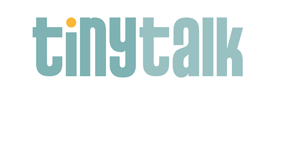For most families, using sign language with your baby will be a new activity for all of you. You’re both learning a new language together, and so repetition is vital. Imagine attending a weekly French class, then speaking no French at home… your progress would be slow to say the least! The same is true with sign language. Weekly classes are a brilliant way to build confidence and increase your vocabulary, but what you do on the days in between will have the biggest impact. Incorporating signing into your daily routines is an easy, effective and natural way to ensure that you practise regularly.
3 Practical Tips for Success:
- Make a note of 2 or 3 core signs that you know, and feel confident using, for the most frequent activities in an average day: e.g. ‘milk,’ ‘more’ and ‘all gone’ (mealtimes); ‘clean’ and ‘dirty’ (nappy changing); ‘buggy,’ ‘ducks’ and ‘fun’ (visiting the park); or ‘bath,’ ‘bed’ and ‘sleep’ (bedtime). If you’re finding it hard to remember, leave post-it notes around the house to remind you of the signs you want to teach in each context. It’ll soon become second nature!
- Singing nursery rhymes is a wonderful way to practise signing. You don’t need to sign every single word, just the key words that you know and feel confident using. E.g. for ‘The sun has got his hat on’, sign ‘sun,’ ‘hat’ and ‘happy’ and ‘play.’ Children love being sung to, and singing together is a beautiful bonding experience. Add in sign language and it’s doubly valuable!
- Sharing books together is another lovely way to teach your baby to sign. Similar to signing nursery rhymes, you don’t need to sign every word, or even something on every page – just the words that you know and want to teach. You can use signs to talk about the illustrations too, e.g. pointing out trees, animals and anything that your child is showing interest in!

Was wondering if you held any workshops or courses for this near me,
Many thanks,
Sam.
Hi Sam, my apologies for the delay in replying to you. If you go to tinytalk.co.uk then you can type in your postcode on the class finder map, and you can see which teacher is your nearest. Lots of the teachers offer adult training workshops if you don’t have children to attend classes with.